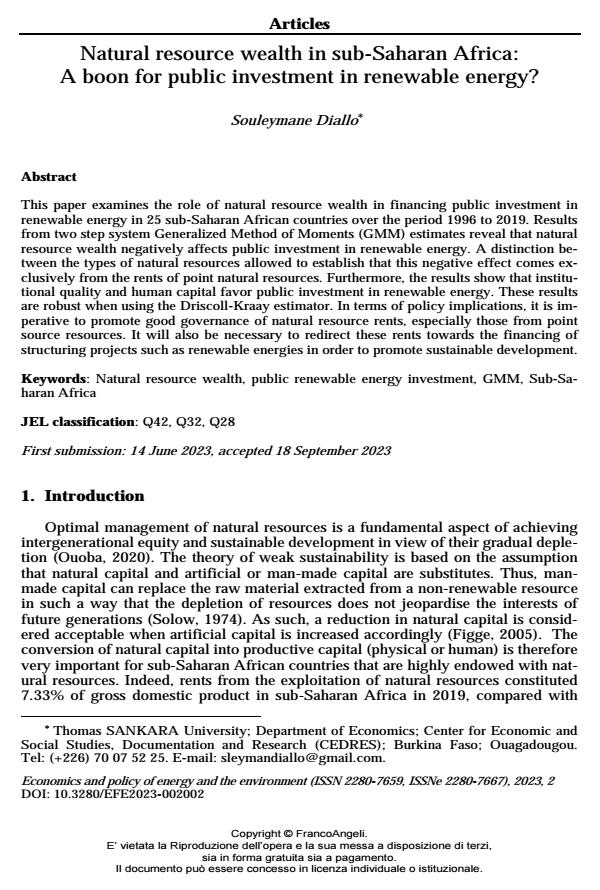Natural resource wealth in sub-Saharan Africa: A boon for public investment in renewable energy?
Journal title ECONOMICS AND POLICY OF ENERGY AND THE ENVIRONMENT
Author/s Souleymane Diallo
Publishing Year 2023 Issue 2023/2
Language English Pages 22 P. 19-40 File size 223 KB
DOI 10.3280/EFE2023-002002
DOI is like a bar code for intellectual property: to have more infomation
click here
Below, you can see the article first page
If you want to buy this article in PDF format, you can do it, following the instructions to buy download credits

FrancoAngeli is member of Publishers International Linking Association, Inc (PILA), a not-for-profit association which run the CrossRef service enabling links to and from online scholarly content.
This paper examines the role of natural resource wealth in financing public investment in renewable energy in 25 sub-Saharan African countries over the period 1996 to 2019. Results from two step system Generalized Method of Moments (GMM) estimates reveal that natural resource wealth negatively affects public investment in renewable energy. A distinction between the types of natural resources allowed to establish that this negative effect comes exclusively from the rents of point natural resources. Furthermore, the results show that institutional quality and human capital favor public investment in renewable energy. These results are robust when using the Driscoll-Kraay estimator. In terms of policy implications, it is imperative to promote good governance of natural resource rents, especially those from point source resources. It will also be necessary to redirect these rents towards the financing of structuring projects such as renewable energies in order to promote sustainable development.
Keywords: Natural resource wealth, public renewable energy investment, GMM, Sub-Saharan Africa
Jel codes: Q42, Q32, Q28
- Analysis of migrant remittances’ effects on energy poverty in Sub-Saharan African countries: a threshold analysis through the role of structural factors Abdoul Hadirou Yoda, Souleymane Diallo, in International Journal of Energy Sector Management /2025 pp.1
DOI: 10.1108/IJESM-07-2025-0009
Souleymane Diallo, Natural resource wealth in sub-Saharan Africa: A boon for public investment in renewable energy? in "ECONOMICS AND POLICY OF ENERGY AND THE ENVIRONMENT" 2/2023, pp 19-40, DOI: 10.3280/EFE2023-002002